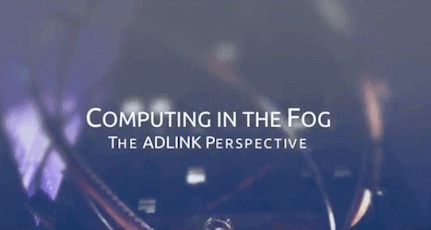Computing at the Edge: Risks and Opportunities
In this video, ADLINK Executive Vice President Rob Risany and General Manager Elizabeth Campbell discuss the opportunities and risks of modern IoT development projects from the operational technology and information technology perspectives. Watch to see how better alignment of these functions may improve the ability to develop disruptive applications and business models.
Watch this series, Fog and Edge Computing, from the beginning here.
Transcript
Rob Risany: It’s interesting because the challenge here ends up being that the OT organization has a set of measuring sticks that it has to meet. I have to reduce costs by this much. I have to increase the turns of my inventory by this much this year. Those are tangible measures that make an impact on the street, and so the intensity with which OT pursues a solution to those issues is sometimes staggering to IT people.
EC: Frightening.
RR:Frightening, because they are used to a much more project oriented, step by step approach, rather than, in some situations, a leap frog situation.
EC: And they’re told that it’s going to happen, versus being part of the overall collaboration many times.
RR: Right.
EC: The directive comes into IT on, this will happen, and it’s coming from the highest levels.
RR: Right.
EC: Frightening.
RR: And that’s what’s going on in IoT. You have a lot of fear being introduced. At a technology level, there are reasonable fears that certainly crop up as OT looks at some of these. Whether they’re the new technologies or rejiggering existing technologies. Analytics has been around forever.
AB: Sure.
RR: Conditioned monitoring’s been around forever. Outsourced computing has been around for, effectively, ever. Blend those three things together, now we have an interesting problem. I visited a pharmaceutical company a number of years ago, and they were conducting a number of IoT experiments. The reality was, they were being driven out of the OT organization and the story was shared with me that the IT organization really had no ability to control what the engineering teams and the lab folks were doing to explore how these different technologies could impact the manufacture of drugs and the R and D process of drugs. Then, at one point, IT did its annual security audit and they found 100 pinholes through three layers of firewall where the password was, password. Okay. So, coming right off of areas where plants have been literally melted down, Stuxnet.
EC: Yes.
RR: The widespread fear about hacking in the global world, whether it’s for national security purposes, or for black hat type of financial attacks, to ransom ware. There are some real issues that are being raised by IT that have to be grappled with. Now, what we’ve done in our solution business is, we’ve started to survey the landscape of the kinds of partners we can be leveraging that have the trust from IT, and the experience to deal with those, and we’ve brought those into our vault.
It’s not just about: Hey. Do I have the data? Do I have the analytics? Can I do the AI? Do I have the hardware? It’s also about: How is that platform managed? We’ve partnered with VMware and are one of the launch partners for VMware’s IoT pulse technology, which is one of the key management technologies that’s embedded in all of our IoT solutions. So, now the IoT organization that’s leveraging an ADLINK solution can leverage their standardized VMware platform and be looking at and using the same security policies, the same patch management processes, the same physical ingress approaches that they use in their data centers for their OT technologies. But, it really reduces the fear, which is really the cause for the problem.
I think you’re right. There’s a lot of issues where right now, it’s about fear, and the fear is the what ifs, which is why so many organizations are spending time on the non-value- add pieces of the way that they define their IoT problems. They’re afraid to disrupt their business models because they’re afraid of the unknown about the things that they read about in the news. The organizations that are farther ahead are seeing the reality, which is, if they don’t disrupt their industries, they’re going to be disrupted.
AB: Thanks for joining us. For more information, please use the link below [http://adlinktech.com].
Fog & Edge Computing video series
-
Vignette #1:
-
Vignette #2:
-
Vignette #3:
-
Vignette #4:Computing at the Edge
-
Vignette #5:
Connect with ADLINK
About ADLINK
ADLINK Technology is leading edge computing with solutions that drive data-to-decision applications across industries. ADLINK provides robust and reliable hardware platforms, data connectivity, and complete Industrial Internet of Things (IIoT) solutions to serve a wide variety of industries including networking, industrial automation, healthcare and defense.
Learn more at adlinktech.com.









